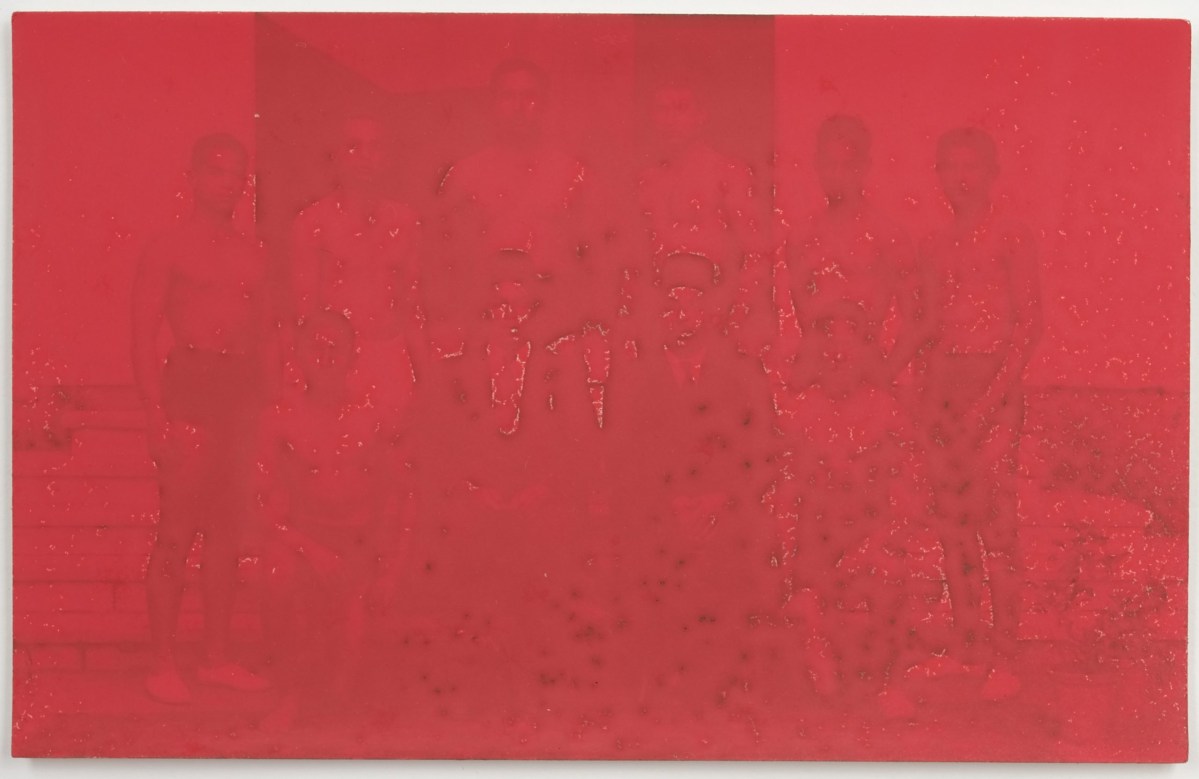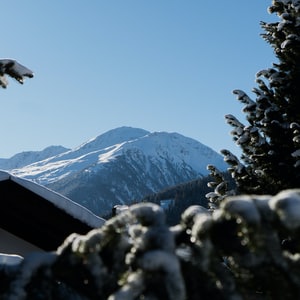How to Choose the Right Canvas for You
10 min readTable of Contents
The blank canvas is a new landscape to explore artistic possibilities and a staple in any artists creative practice. But the term canvas is a catch-all for stretched fabric over a frame. Historically two materials have dominated the canvas industry, Cotton and Linen. Before you choose your canvas of choice, it’s always good to see what’s available as there is a vast selection to be made so think about what it is you are using the canvas for, what medium you’ll be using and what will help you achieve the results to suit you. In this blog we’re going to give you a breakdown of the characteristics of each to help you decide what surface is best applicable for your practice.
STRETCHED CANVAS
Canvases are generally tightly stretched on to a frame that creates a spring in the fabric when pressure is applied. The more taut the canvas ia the more enjoyable it is to paint on, as the tension in the surface has an element of vibrancy and creates a more rigid surface to paint on. The tightness of a canvas must be the same across the whole frame so that the grain of the fabric is square to the edges, with no skewing. Readymade or pre stretched canvases most commonly have a universally primed canvas stretched on to a wooden frame with bevelled edges or quandrants.
Never used canvas before and want to experiment?
Daler Rowney Simply Cotton Canvas
The Simply Canvas offers an excellent value for money. Available in a comprehensive range of shapes and sizes, all their stretched canvases are back stapled with clean edges and can be hung without framing. Perfect for starting out and experimenting with canvas for the first time.
- Canvas’ are made with 100% cotton and are triple primed, featuring a wooden frame.
- All sizes include wooden edges to help you stretch your surface.
- Simply Canvases are versatile, suitable for mixed media, collage, impasto and heavy textures.
- 100% cotton, 250gsm acid-free canvas.
- Triple primed and ready to use.
- Depth: 16mm.
- Sold in packs of x5 (20x20cm is sold in packs of x10).
Cass Art Artists Cotton Canvas Exhibition Grade
Our Cass Art Artists Cotton Canvas is of artists’ exhibition grade and is made from high quality European spruce wood and 100% rayon cotton. Primed with three layers of gesso primer, FSC approved and acid free, ready to apply paint onto straight away.
- Made from the highest-quality spruce wood and 100% pure cotton, this exhibition grade, European made, medium grain canvas has been produced for use with all forms of oil and acrylic colour, as well as many other mixed media applications.
- These canvases are also primed with three layers of gesso primer, FSC approved and acid free.
- Various sizes available, 1.9cm / 0.75 inches deep.
- It’s a heavyweight canvas so weighs at 335gsm / 11.8oz.
- They are sold in packs online but available individually in stores.
You can shop the full range of sizes in the Cass Art Cotton Canvas Artists Grade range here.
Cass Art Cotton 11.3oz Canvas
This range comes in 2 different depths - 1.9cm and Deep Edge 3.8cm. They are made from high quality spruce wood and 100% pure cotton. This medium grain canvas has been produced for use with all forms of oil and acrylic colour, as well as many other mixed media applications.
- These canvas are also primed with three layers of gesso primer, FSC approved and acid free.
- They are sold in packs online but available individually in stores.
- The canvas range in size and are 1.9cm / 0.75 inches deep. The canvas heavyweight at 320gsm / 11.3oz.
- The Deep Edge range in size and are 3.8cm / 1.5 inches deep. The canvas heavyweight also at 320gsm / 11.3oz.
You can shop our Cass Art Canvas range here.
Looking for a Cotton Canvas but in a slightly unconventional size?
Loxley Oval and Round Canvases
The Loxley Oval and Round Canvas range are made from Artists’ quality cotton canvas which is stretched onto an MDF frame and then stapled on the back for maximum presentation. This increasingly popular innovative shape of canvas has been designed to satisfy the demand for a less traditional shaped canvas. If your vision demands a circular canvas you can make sure you get the right size to suit.
- Round available in three sizes: 300mm (12”), 450mm (18″) and 600mm (24”) diameter.
- Oval available in three sizes: 10 x 8″, 16 x 12″ and 20 x 16″.
- 18mm deep.
- Made from artists’ quality Loxley Gold canvas.
- High grade timber 18mm quality wooden frame.
- 11oz 100% cotton duck canvas.
- Triple primed with high quality pigmented acrylic primer.
- An excellent surface for both oil and acrylic paint.
- The edges of the canvases are clean wrapped and free from staples or tacks.
Shop our Loxely Oval and Round Canvas.
Artists Natural Linen Canvas
Linen is made from flax and considered to be superior to cotton due to strength and durability. It is not super absorbent by nature like cotton is and is less prone to expand and contract due to moisture. It is able to retain its natural oil content, which preserves the fibre’s long-term flexibility.
Cass Art Artists Natural Linen Canvas is made from high quality European spruce wood and 100% pure flax linen.
- Made from the highest-quality spruce wood and 100% pure flax linen, this exhibition grade, European made, medium grain, clear primed canvas has been produced for use with all forms of oil and acrylic colour, as well as many other mixed media applications.
- These canvases are primed, FSC approved and acid free.
- They are sold in packs online but available individually in stores. The canvas range in size and are 2cm / 0.79 inches deep.
- The canvas heavyweight at 320gsm / 11.3oz.
You can shop the full range of sizes in the Cass Art Natural Linen Artists Grade range here.
Pebeo 3D Deep Edge Linen Canvas
These Pebeo 3D Canvases are made from 100% natural raw linen that is 300gsm in weight, with a medium grain. They have been double coated in a universal clear primer, making the canvas suitable for oil and acrylic painting and mixed media applications. The deep edge frame on these canvases are 35mm wide. They can be painted and the artwork continued around the canvas frame to create a 3D piece of art. This means that it does not have to be framed and gives a contemporary feel to the painting.The canvas is stapled over the back of the wooden frame so no staples can be seen. The stretchers / wooden frames are made from a high quality paulownia wood which is lighter than pine. As these Linen Canvases are primed with a clear gesso, the natural raw linen surface can be used to create interesting backgrounds. These canvases are ready to paint on.
You can shop our Pebeo 3D Linen Canvases here.
Canvas Boards
Canvas board is the term used for when a canvas is adhered to a rigid surface such as wood or card. They are wrapped around the board and glued to the reverse, whereas boards have canvas glued to the front only, with shear edges. They are perfect for both quick sketches and more accomplished finished pieces
Our new range of Cass Art Canvas Board provide a high-quality alternative to using stretched canvas. They are durable and more portable making them perfect for al fresco painting. These canvas boards are triple-gesso primed, with a medium grain surface making them perfect for all forms of Oil, Acrylic and mixed media applications.
- High quality, dependable alternative to using stretched canvas.
- Triple Gesso Primed.
You can shop our full range of Canvas Boards here.
CANVAS ROLLS AND STRETCHER BARS
Alot of artists prefer to make their own canvases to their own specifications, so If you’re struggling to find the right length, width or depth, in the one canvas we also have canvas rolls and stretcher bars available to meet your needs too! There are a couple of things to consider when choosing your ideal canvas and stretcher bars.
Weave
Canvas is measured in grams per square metre (or gsm as you’ll commonly see) or ounces per square yard (oz). If the cotton or linen has a heavy weight then one or both of the following is true: it is a thick, tough yarn and/or it is tightly woven. Lightweight cotton or linens have an open weave and generally a fine yarn, they are easier to stretch and are more responsive to tightening procedures to make them more taut. The lighter weight canvases are usually used by artists who draw and/or have a much more delicate touch in their work.
Weight
The heavier the weight of the canvas means the more tension the fabric can take without ripping. If you’re deciding to apint on a large scale i’ts best to go with the heavier option. Weight is how much fabric there is per area so it is determined by both thickness of the thread used to weave and how tightly it is woven. A coarse canvas can be loosely woven so it could be lighter weight than a fine canvas that is tightly woven. But usually, a thick thread makes a heavy canvas and a thin thread makes a light canvas.
Cass Art Unprimed Cotton Duck Canvas Roll
Our Unprimed Cotton Duck Canvas is woven from 100% cotton and comes in 9oz, 10oz, 12oz and 15oz
Cass Art Primed Cotton Duck Canvas Roll
This Primed Cotton Duck Canvas is heavy duty 9oz canvas woven from 100% cotton, primed with a Universal Primer for use with both Oil and Acrylic. It is a strong canvas with medium/ coarse weave. It comes in 9oz and 12oz and is 72 inches (183 cm) in width.
Stretcher bars
Our stretcher bars are produced from high quality European pine and measure 36mm in depth, 8mm lip and 40mm in width. Available in a range of sizes from 25 to 180cm in length. They are strong due to the laminated construction to ensure zero warping.
- Cass Art Branded
- Unique & exclusive to Cass Art
- Produced from the same highest quality European pine as existing Exhibition range
- Easy to assemble
- Affordable, whilst offering the same and durability and high quality
- Stretcher Bars sized 100cm+ are mortised in the centre for interlocking cross bars to add greater dependability and stability.
Stretching your own canvas can seem like a difficult quite time-consuming process. But the benefits are a plenty. Firstly, you give yourself a huge range of options such as meeting exact specifications: the dimensions, the shape, the type of canvas, the make and quality of the wood, and so on.
Then, having a hand in creating the surface support that you’re going to paint on allows you to take further ownership of the finished product. If you thought that finishing a successful picture was satisfying enough, there really is a lot of satisfaction you’ll get from completing that you have stretched yourself. Here’s some quick tips to get you started with stretching your very own canvas.
Tools
2 are essentials for this is - Global Chrome Alloy Canvas Pliers are an essential for stretching canvas. Their 55mm serrated jaws grip the canvas firmly, without slipping.Their spring-loaded handle makes them comfortable to use. Also, a staple gun with staples anything from 4 – 8mm are ideal to stapling the canvas to the bars
Prep the stretcher bars and canvas
Lay out your canvas roll on a flat work surface covered with a plastic sheet. If the canvas is pre-primed, make sure the primed side is facing down. Lay out two pairs of stretcher bars on top with the quadrant side face down and side into each slot. Measure and compare the diagonals to ensure you have created a perfect rectangle.
Measure the edges and cut
Measure a distance of around 7cm of excess canvas away from both sides of the four corners of the stretcher bars. With a long ruler, draw lines between the pencil marks to form a rectangle around the stretcher frame.
Staple the sides
Fold one side of the canvas back over the frame. Using your stretching pliers, grip the centre of that same side of canvas and pull it tighter still. Secure with a staple in the centre of the frame. Repeat this process with the opposite side of the frame. Then, turn the frame 90 degrees and repeat the process on the remaining two sides.
Look for the diamond!
Raise the canvas and this will help you to judge whether you have the required tension. The four staples should pull the canvas nice and tight that forms a diamond shape similar to the one above. If one of the sides of the diamond doesn’t appear tight enough, remove the relevant staples, lay the canvas back down and repeat the previous step.
Tension
With four sides of the canvas secured, you need to begin to work your way to the corners, tightening with the canvas pliers and stapling as you go. Work around the frame in a pattern: add a single staple to the near side, then the far side, then one to the corners. As you work your way to the corners with the staples, ensure that the canvas curls up in to a lip shape, similar to the one pictured above. This will ensure you can fold the corners over neatly.
Finish
To increase the tension and strengthen the corners of your canvas, hammer in small wooden wedges to the slots provided on your stretcher bars. If you didn’t select a pre-primed canvas roll, you can size using size and prime before it is ready to go. For size rabbit skin glue is great and ready for use after standing in warm water and is applied after diluting with water in concentration of one part to 14. For priming Gesso is ideal as it ensure artworks remain stable, permanent and long lasting. It can be used straight from the tub and applied using either a flat/priming brush or roller.
Now you’re ready to get started with chossing your surface of perference. You can explore our full range of canvases here.
SHARE
Share your creations with The Cass Art collection on social media, and make sure to use the hashtag #cassart for the chance to be featured on our feed



